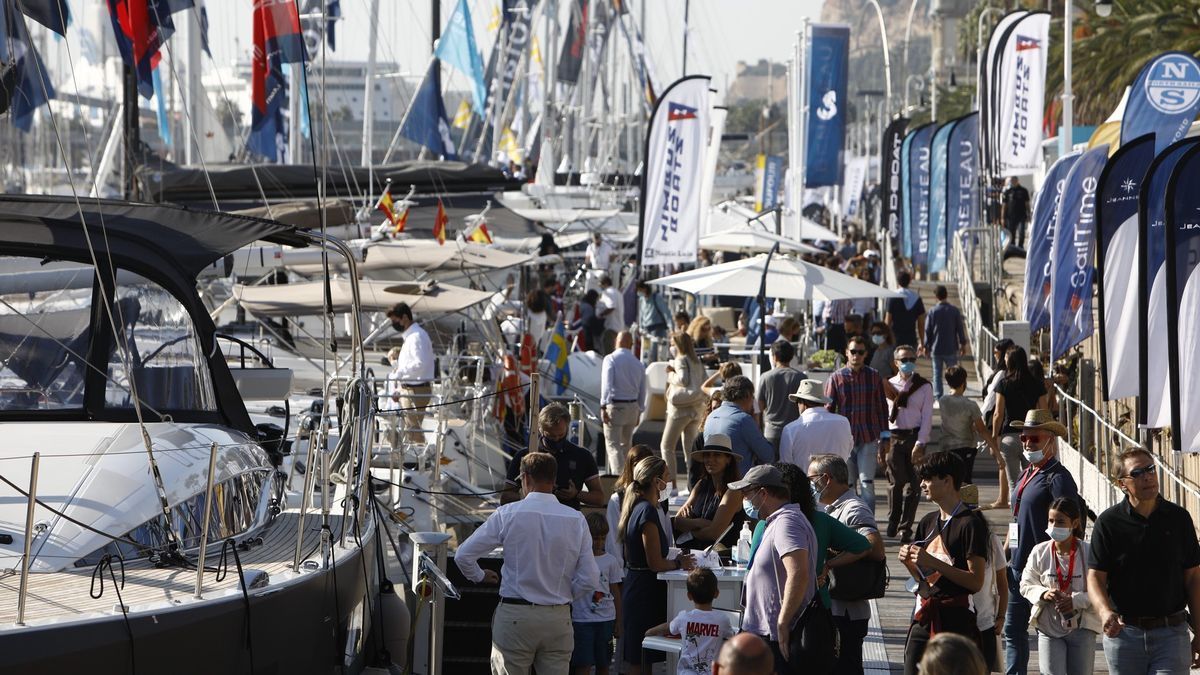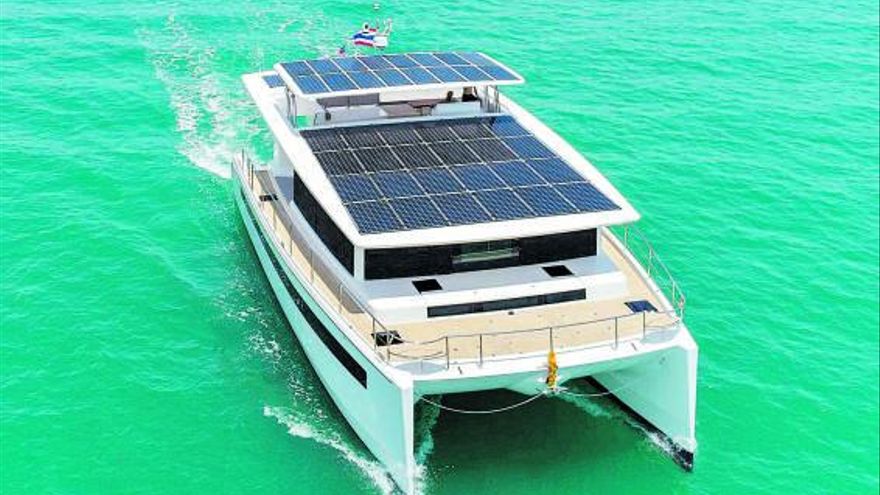Recreational boating is in full transformation and boatyards, accessory and engine manufacturers are making great efforts in the search for alternatives to fossil fuels. Some of the technological innovations and initiatives being developed around on board electric power will be part of the offering at the 59th edition of the Salón Náutico of Barcelona.
The concept of eco-responsible boating has taken hold both in the marine industry and among boating and water sports enthusiasts. So much so that, although we are still far from being able to completely abandon the thermal engine or on-board generator as the main sources of electrical energy, we are looking at a planned death sentence.
An internal combustion engine is noisy, generates pollution and fills the bottom of the sea with sounds that invade the necessary silence of the depths that marine life needs. However, we still need them even though we know that fossil energy sources are running out and approaching the end. What alternative do we have to enjoy boating without fossil fuel? There is only one answer: electricity, directly or through rechergeable batteries.

Autonomy, the great challenge for boating
For all this to one day replace fossil fuels, the great challenge for recreational sailing is autonomy, or in other words, the storage capacity of batteries.
Here, the automobile industry sets the pace with permanent technological advances, since electric motors do not pose too many problems. But, as the range of an electric boat depends on weight and speed, these two factors determine the power and consumption for a given speed, which together with the capacity of the batteries provides us with the range.
Direct electricity or through battery storage is the alternative to fossil fuel
For this reason most of the current electric boats are small units, boats that make short trips (ferries) or, if they are intended for high seas sailing or long coastal cruising, they are capable, but at very low speeds, generally less than five knots, to achieve a range that is very acceptable and can reach almost 100-140 miles with current technology.
On the other hand, more and more small sailboats, inflatable boats, semi-rigid boats and even kayaks use outboard or inboard engines powered by batteries every day, although again with high top speeds, but at the cost of a range that usually does not exceed about two hours.
Lead-acid or lithium batteries?
Batteries are, today, the only devices capable of storing electricity. Understanding the technologies available to us makes it easier to choose the model that best suits our requirements. To begin with, we must bear in mind that the charge/discharge cycles of a lead-acid battery -the most common on board- are not infinite and therefore the duration is limited (on average, about five years in continuous use).
The lithium has come to solve some of these problems: at the same capacity they weigh half as much and the cycles are twice as long as their useful life. Hence, today they are the most used when we talk about purely electric propulsion even in large hybrid boats, although they require a large storage area and its weight is considerable. However, lithium is an unstable material and carries risks of overheating. Another problem is its recycling and its availability, which is scarce and limited.
The hydrogen conundrum
The fuel cell/hydrogen may be the future. Hydrogen is a very light gas which, when combined by catalysis with the oxygen in the air inside a fuel cell, produces both heat and electricity, leaving only water as a residue. The energy capacity of hydrogen is three times higher than that of diesel and produces electricity at 400 or 600 volts, which is transferred to the batteries through a charger. But this technology also presents problems such as its very high cost, its storage in special bottles at high pressure, its recharge in special places, the location on the ship and its production.
The recharging of the batteries
The recharging of the batteries must correspond to the energy consumed. And this is the problem, since to satisfy all the on board needs a very high consumption is required that forces continuous recharging. To recharge them there are several systems: solar panels with a regular and daily charge offer a yield close to 98%.
Another solution is wind turbines, frequently used in ocean-going sailboats, of which there are many manufacturers, or hydro-generation by means of propellers, a solution used in round the world sailboats participating in regattas such as the Vendée Globe, The Race, etc. Experiments are also being carried out with kites which, when hoisted and moved by the boat, generate electricity. Finally, of course, the port intakes and generators, which are more polluting.
100% solar-powered cruising?
There are already sailing or motor boats propelled by electric motors powered by solar panels, but generally fossil fuel generators are still needed to power the batteries and meet the needs. Experimental boats such as the Planet Solar (now Race for Water) or the Energy Observer, which experiments simultaneously with various energy sources such as solar, wind and hydrogen, as well as many passenger ferries, lake cruisers or simply recreational or diving ferries, which are powered only by solar panels, have been in operation for some years.
For their part, many recreational catamarans, both motor and sail, because they have larger flat surfaces than monohulls, already include among their options the installation of sufficient solar panels to maintain the batteries on board, electronics, lights and even appliances such as refrigerators. And more and more monohull sailboats are installing flexible solar panels on deck, or rigid ones mounted on a targa bow at the stern.
So there is still a long way to go and energy storage technology will have to evolve a great deal before fuel can be completely replaced by electrons.
Going all-electic
Nordic shipyards are pioneers and are leading the way. One example is X-Shore, but also the cruising catamarans with 100% electric propulsion Silent Yachts, the pioneering German manufacturer of electric outboard and inboard motors Torqeedo, or the Swedish shipyard Candela with its day cruiser, equipped with an electric motor and hydrofoils that allow it to literally fly over the water.

